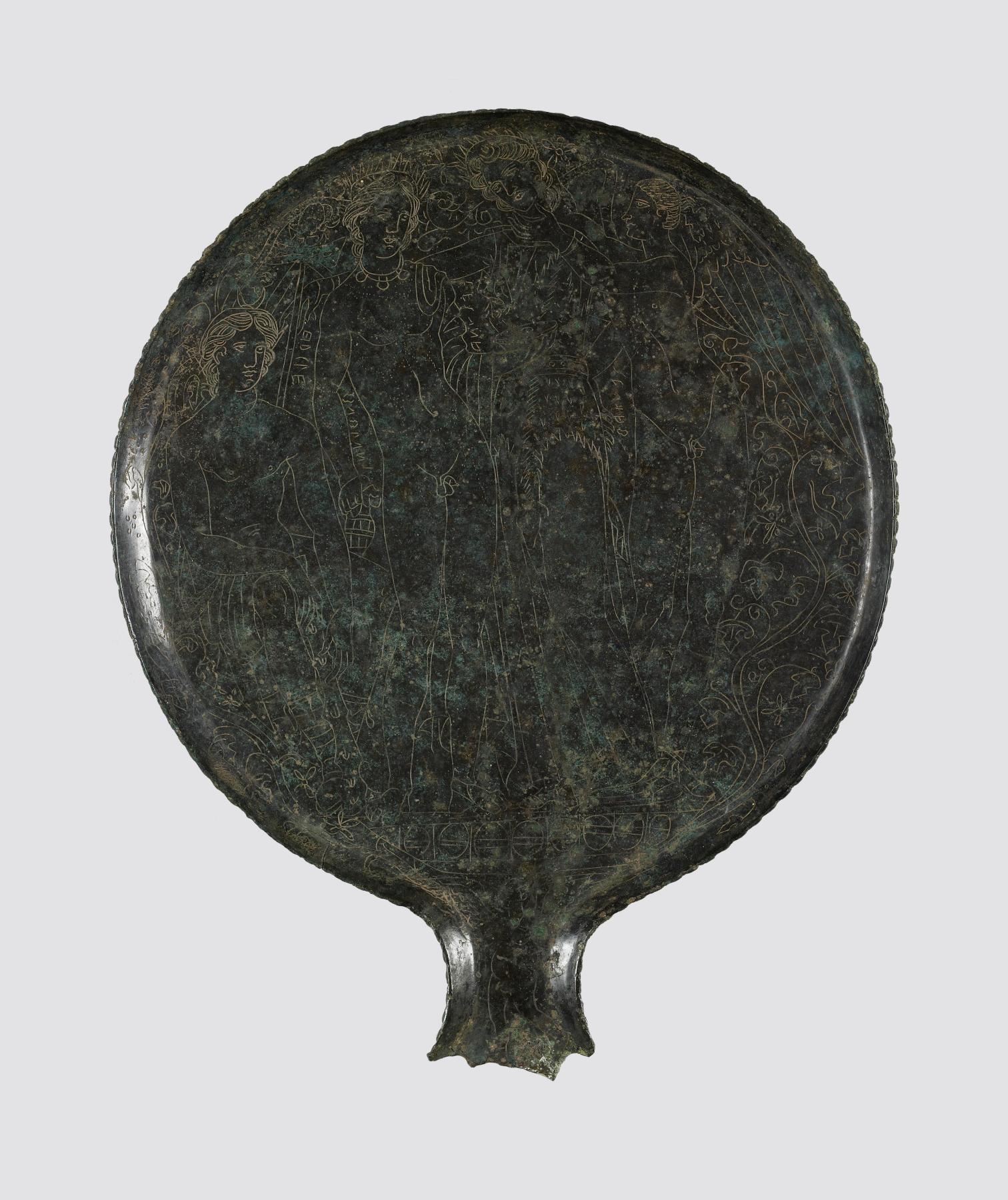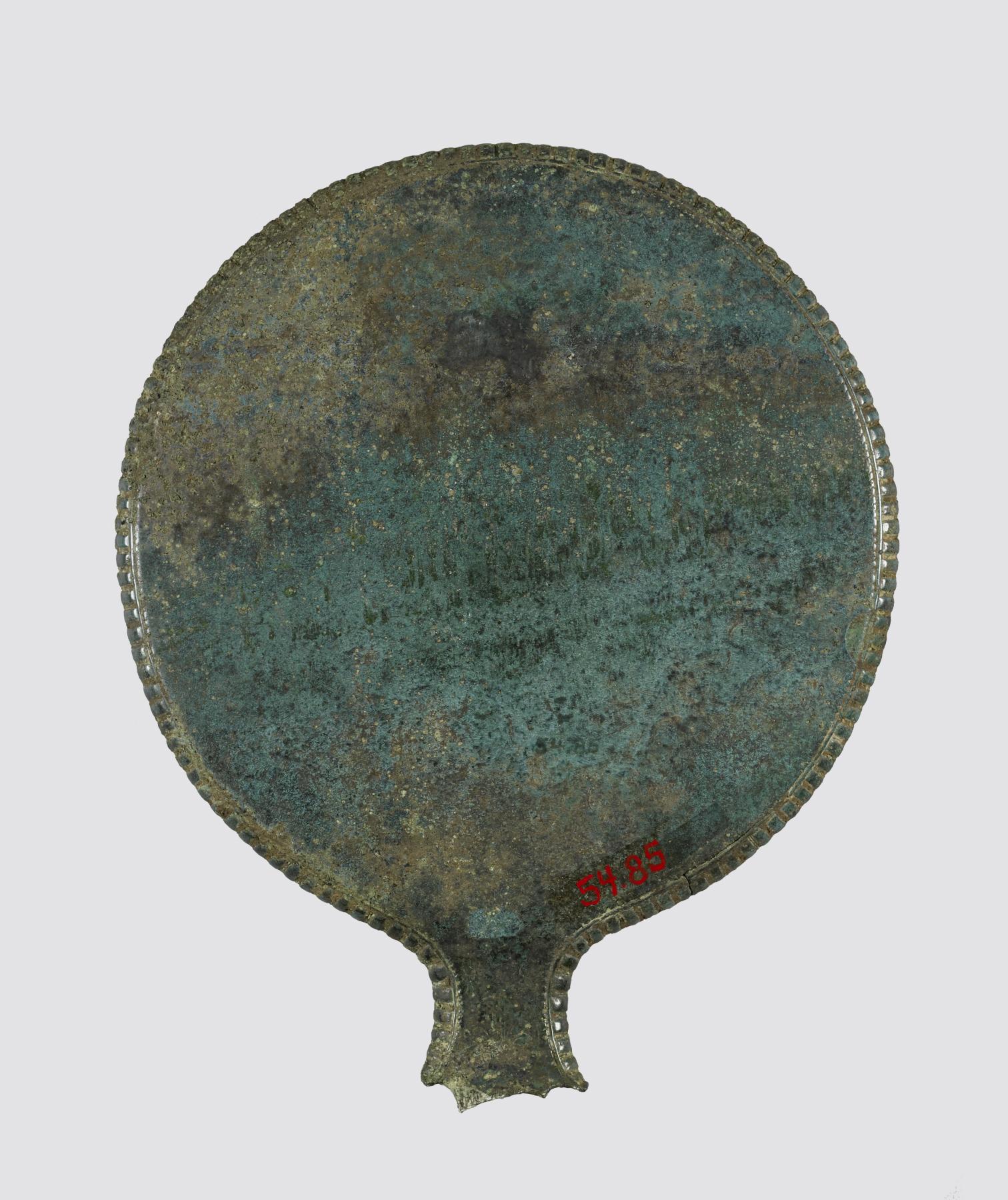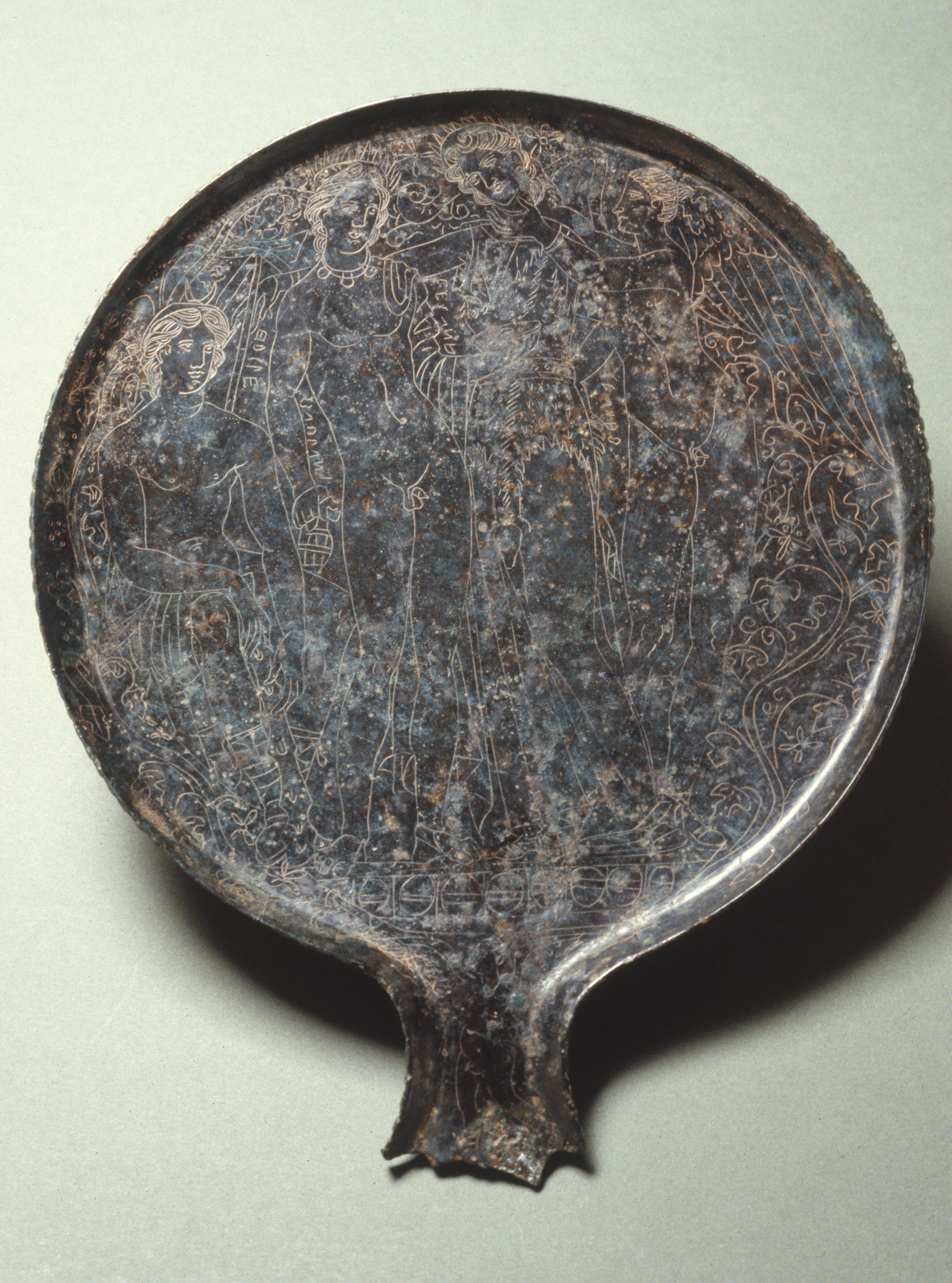Mirror with Heracles, Dionysus, Ariadne, and Eros
(Roman Empire )
In order to create a reflective surface, the front of ancient mirrors were either highly polished or covered with a thin layer of silver. Engraved on the back of this mirror is a scene from the Greek myth of the marriage of Dionysus. The figures are identified by engraved inscriptions with the Etruscan names for Heracles (Herkle), Ariadne (Vesuna), Dionysus (Fufluns), and Eros (Svutaf?).
Inscription
Provenance
Provenance (from the French provenir, 'to come from/forth') is the chronology of the ownership, custody, or location of a historical object. Learn more about provenance at the Walters.
[Found at Fattoraccio, Castel Giorgio in the district of Orvieto, 1877]; Biagio Bucciosanti, Orvieto, 1877, by excavation. Alessandro Castellani, Rome, by 1883, [mode of acquisition unknown]; sale, Collection Alessandro Castellani: Objets d'art antiques, Rome, March 17-April 10, 1884, p. 36, lot 188. Dikran Kelekian, Paris and New York, [date and mode of acquisition unknown]; Henry Walters, Baltimore, 1926, by purchase; Walters Art Museum, 1931, by bequest.
Conservation
| Date | Description | Narrative |
|---|---|---|
| Examination | examined for exhibition | |
| 3/17/1980 | Examination | examined for technical study; x-ray |
| 4/8/1980 | Loan Consideration | examined for loan |
| 7/20/1992 | Treatment | other |
| 7/21/1992 | Treatment | other |
Geographies
Italy, Castel Giorgio (Place of Origin)
Measurements
9 1/4 x 7 5/8 x 1/4 in. (23.5 x 19.3 x 0.7 cm)
Credit Line
Acquired by Henry Walters, 1926
Location in Museum
Accession Number
In libraries, galleries, museums, and archives, an accession number is a unique identifier assigned to each object in the collection.
In libraries, galleries, museums, and archives, an accession number is a unique identifier assigned to each object in the collection.
54.85








